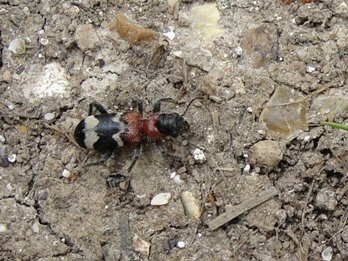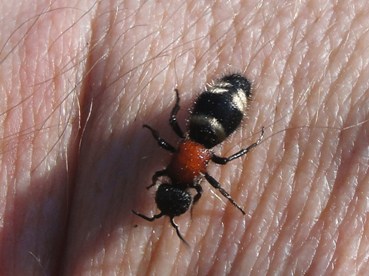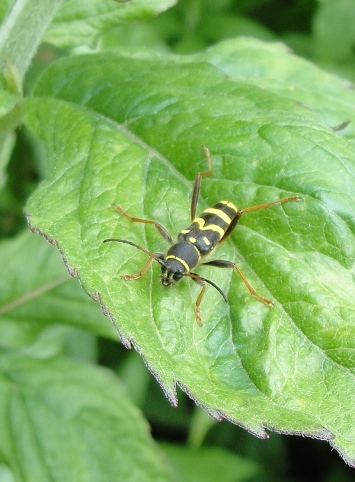The evolution of species has had amazing adaptations for survival. One of the best strategies for survival is mimicry of poisonous species. Just how simple plants and insects have mastered this is unclear, but surely some of it must be through trial and error or accidental variations in pattern and colour that somehow lead to rejection by predators due to resemblance of other species.But, and there is a huge but here because many species have to go through a beginning point where for example spots and dots are simple and do not resemble eyes or coloured stripes of other insects.Just how so many species adopt this mechanism and always seem to get to the perfect image is strange to say the least. They do not know of their surroundings let alone other species, so how do for example ,insects, and even plants mimic smells, such as orchids that mimic bees and even their pheromones ? A lot of work needs to be done if science is to come up with a valid answer to this. Many insect species mimic bees and wasps that have stings. The ant beetle(Thanasimus formicarius) as its name suggests mimics ants and it does run about like one. the beetle and its larvae are predatory on other insects and they live in woodlands especially coniferous woodlands with good ground vegetation and decomposing wood.
The beetle may be mimicing the velvet ant(Mutilla europaea) which does have a painful sting even to humans if they do happen to sting somebody although one has to hold them between fingers for them to do so. Below is a specimen of this species, a wingless female. they are a parasite of bumble bee nests and are moderately common on heath lands.
Another mimic, this time a wasp mimic, is the harmless longhorn beetle (Clytus arietis) rather common in herb rich woodlands. Like most longhorn beetles, the larvae develop in decaying wood .
I came across an odd wood ant(Formica rufa) nest a week ago. The nest was sprawled out across the sleepers of a railway line. I have never found a wood ant nest in such a strange place before.




